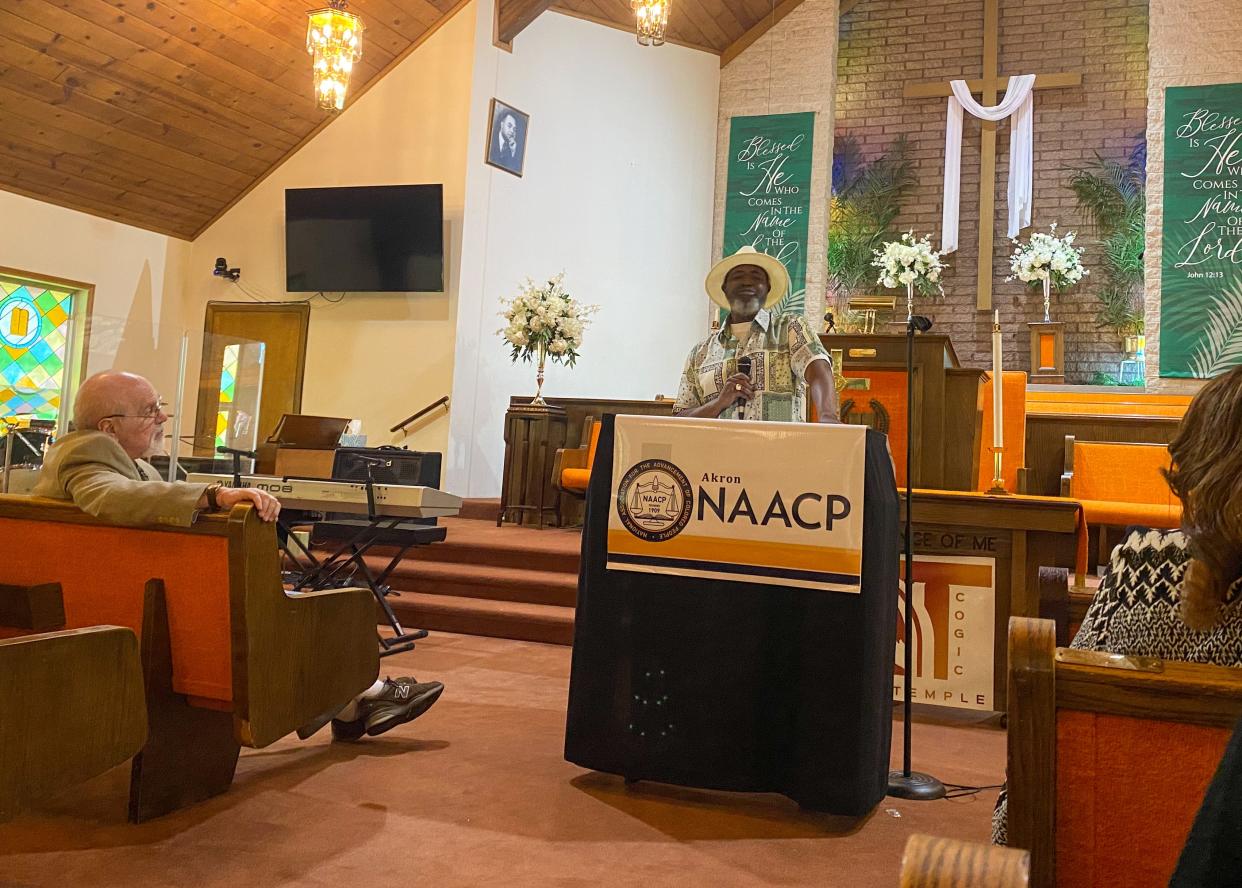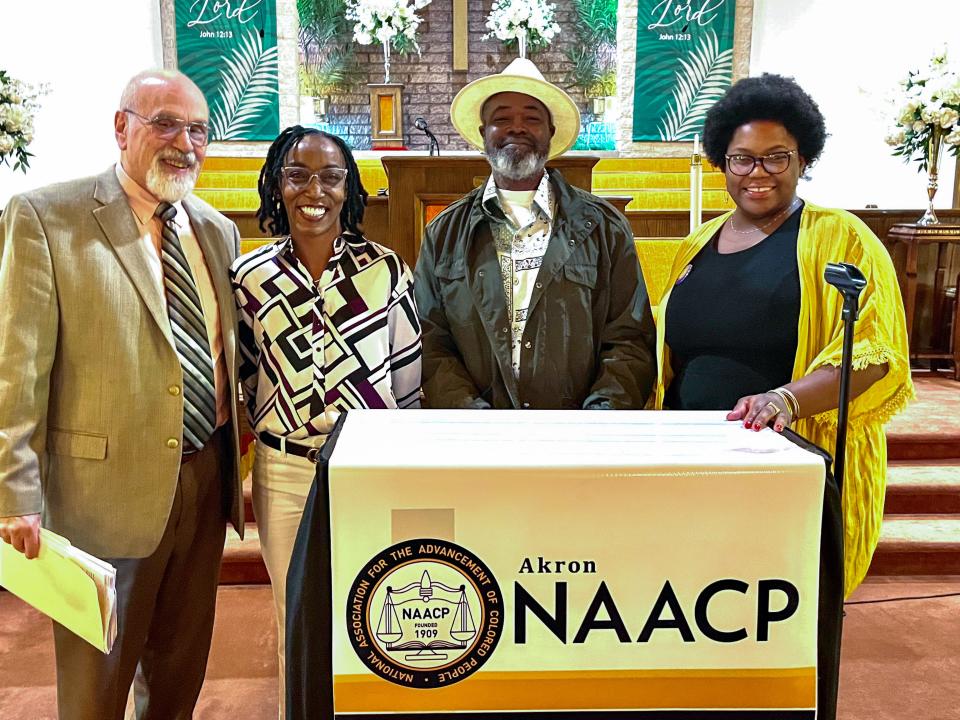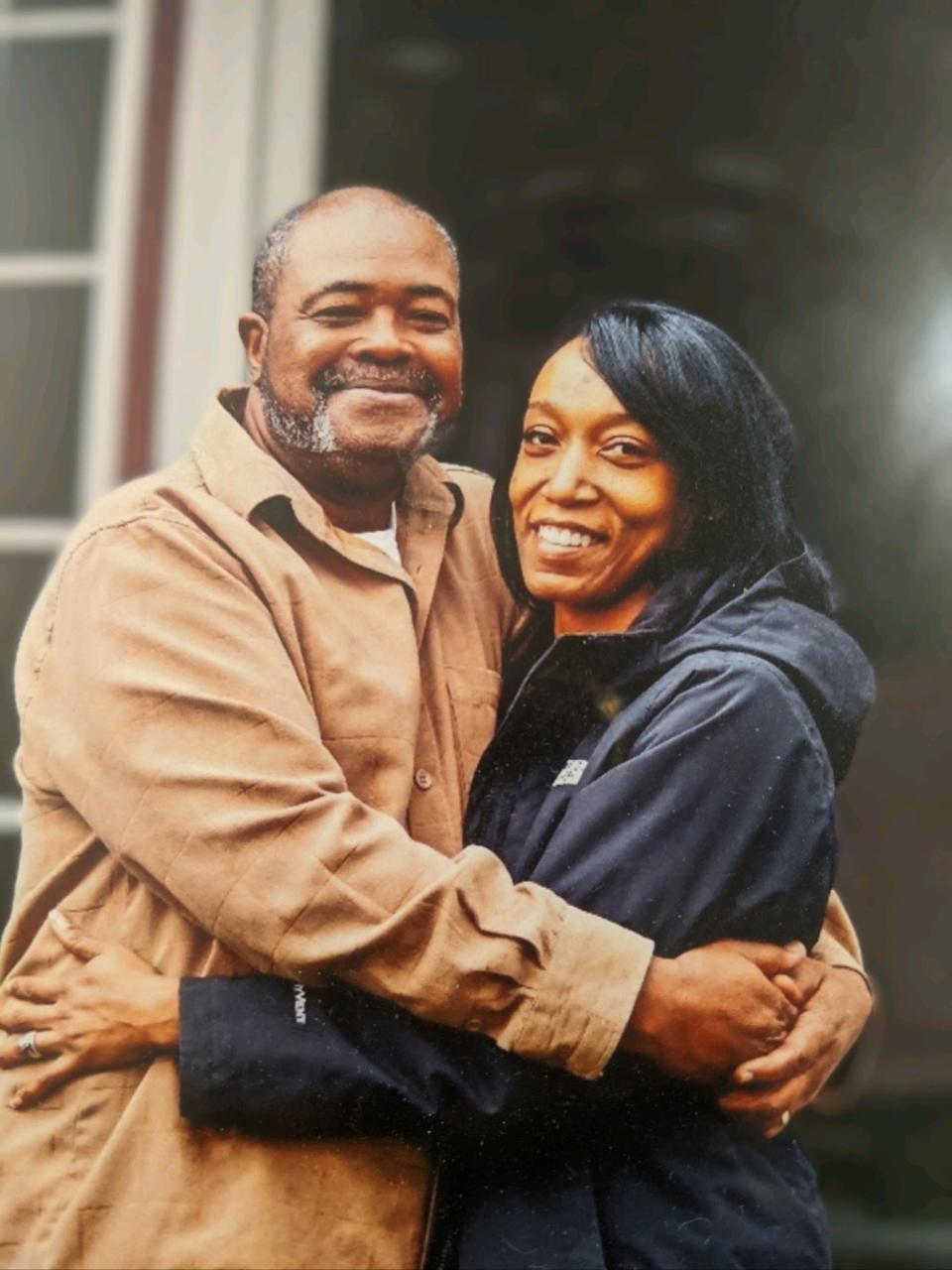'Completely broken': Exonerated death row inmate speaks out on flaws of capital punishment

Kwame Ajamu was only 17 years old when he was arrested and sentenced to die for a crime he didn’t commit.
It was a warm spring day on May 19, 1975. Ajamu, his brother and friend were wrapping up a basketball game. On their way home, the trio passed a crime scene where a money order salesman had been robbed and killed. His body was still on the ground, outlined in chalk. It was only a matter of days before Ajamu woke up in his bed, flustered and confused as armed Cleveland Police officers swarmed his home to arrest him.
Ajamu recounted the story to a crowd gathered Thursday in St. Ashworth Temple during an Akron NAACP meeting. It was exactly 47 years after the day of the murder that changed the course of his life.
What followed was a wrongful conviction leading to 28 years in prison and a death sentence, all hinging on the testimony of a 12-year-old boy who claimed to witness the crime and later admitted to lying.
“The system is completely broken in every way,” Ajamu said.
Even after he was released on parole in 2003, it was another 11 years before he was able to be exonerated and clear his name, at which point his brother and friend were finally discharged from prison.
“If not for the efforts I put forth in those 11 years after I got out and the people who believed me, they would still be in prison,” he said. “They probably would’ve died in there.”
Ajamu is now using his story to mobilize Ohioans to advocate for abolishing the death penalty. He serves as the board chair of Witness to Innocence, an organization whose members are all death row exonerees that advocate for the end of capital punishment.

“I’m here because it has become my obligation and duty ever since the age of 17 to tell this story,” he told Akron’s NAACP members. “I’m here because you can actually see someone who was sentenced to die. You can actually witness what wrongful incarceration looks like.”
Death penalty resources better spent on victims of the crimes, advocates say
Ajamu was joined by his wife, LaShawn Ajamu, a Canton native whose brother was murdered 25 years ago in a road-rage incident. LaShawn spoke passionately against the death penalty, saying that while her family wanted to see justice served against the man who killed her 20-year-old brother, an execution wouldn’t have given them the closure they needed.
She called the argument of using the death penalty as justice for the family “political grandstanding,” saying the state’s resources would be better spent on providing resources for victims of the crime.
Ohio taxpayers pay approximately $3 million per death penalty case, compared to $1 million per life without parole case.
“My family, myself, we had never experienced the intense trauma of losing a loved one to murder and we had no idea how to deal with this pain,” LaShawn said. “No state, city or any agency provided my family with any information about resources available to help us deal with our murdered loved one… We were on our own as far as the state of Ohio was concerned.”

She argued that capital punishment processes prolong a family’s grief period, as appeals can span decades and do nothing to help them heal.
“Killing this man, it wouldn’t have brought my brother James back,” she said. “There’s no such thing as closure because there will always be an empty seat at my family table.”
Death penalty disproportionately affects Black Americans
Since 1976, approximately 35% of prisoners executed were Black, despite only making up 13% of the U.S. population.
In Ohio, as of fall 2020, more than half of death row inmates were people of color.
In addition, a prosecutor is more likely to seek the death penalty if a victim is white; capital defendants charged with killing a white person are twice as likely to receive the death sentence as those charged with killing a person of color.
“The death penalty is the sharpest edge of the judicial system that needs so much work, and it contains every issue within our justice system: you have discrepancies of race, prosecutorial and police misconduct, faulty eyewitness testimony, junk science,” said Jennifer Pryor, the director of organizing and outreach for Ohioans to Stop Executions. “You got so many pieces of every part of our judicial system that leads to wrongful conviction.”
And wrongful convictions happen more often than people might think: for every five people Ohio has executed, one innocent person was exonerated from death row. In total, Ohio has sentenced 11 people who were later proven innocent to die.
Speakers urge legislative action, constituent advocacy
Ohioans to Stop Executions provided postcards for all attendees to address to lawmakers and urge them to vote in favor of H.B. 183 and S.B. 103 — legislation that would end capital punishment in Ohio. Pryor said they plan to hand-deliver the cards to the Statehouse.
“We have a real opportunity,” Pryor said. “No death penalty repealment has ever made it this far. We are killing people who are innocent, we are harming families and we are costing Ohioans a lot of money.”
Reporter Abbey Marshall is a corps member with Report for America, a national service program that places journalists into local newsrooms. Learn more at reportforamerica.org. Contact her at amarshall1@gannett.com.
This article originally appeared on Akron Beacon Journal: Exonerated inmate speaks on ending capital punishment to Akron NAACP

